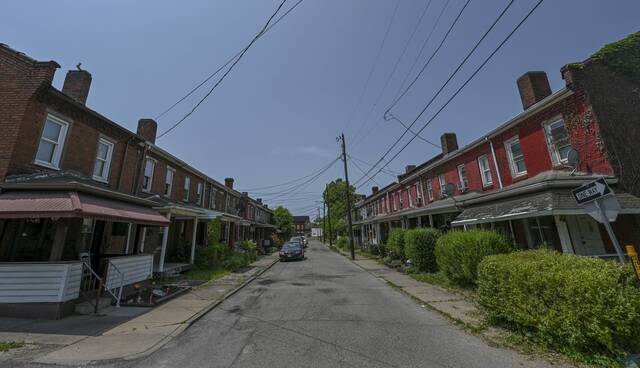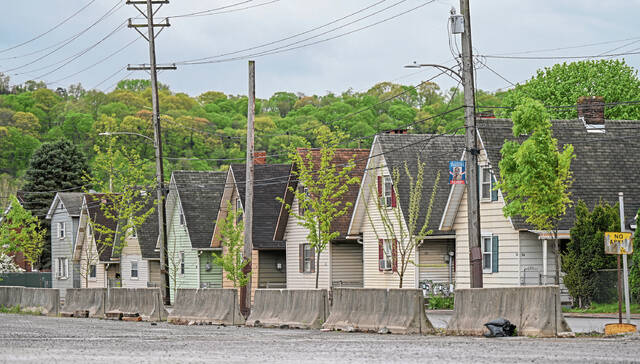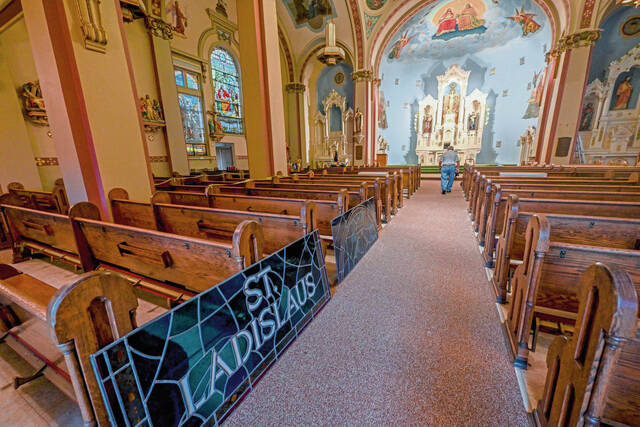In effort to rebuild, tours showcase historical significance of Natrona
From its early days as sacred salt-gathering grounds for Native Americans to the manufacturing of the pesticide DDT for war efforts in the 1900s to today’s steel mill, Harrison’s Natrona neighborhood oozes historical contributions to modern industry.
Scandalous tales are a close second.
Fanny Sellins, the first woman union organizer, was murdered for helping the town’s picketing steel workers; Natrona’s “House of Secrets” held clues to the early stages of the atomic bomb; and Leon Czolgosz, the man who assassinated President William McKinley, spent his teen years working at a glass factory in the neighborhood.
“This little town changed the world for the good and the bad,” said Bill Godfrey, president of advocacy group Natrona Comes Together.
Godfrey and Helen Strzesieski, a co-founder of Natrona Comes Together, are spearheading historical tours to help put the town back on the map.
The cost has not yet been determined for the appointment-only events that are expected to last up to 90 minutes. Tours are expected to ramp up in the spring but are available now.
“I just love this town so much,” said Strzesieski, 87, sporting a “Natrona Girl” shirt. “We’re never gonna get the whole way back, but we can try to preserve all that it was.”
Tours will begin at the Community Park on River Avenue where the group built a Colonnade of History — 10 stone pillars that line the walkway and are dotted with mosaic images of years gone by.
Columns are dedicated to the steel mill, Polish heritage and the Penn Salt manufacturing company, among other eras.
Tour participants will learn about the West Penn Railway, which ran electric street cars from 1906 until 1937, and get a glimpse of the property which once housed Allegheny Steel Co., which became Allegheny Ludlum Steel Corp., both predecessors of today’s ATI.
In its heyday, there were 113 retail businesses in Natrona. People and goods poured into the town onboard 24 passenger and freight trains. One of them, Natrona Bottling Co., still stands along River Avenue. It is the last glass soda pop bottling company in Allegheny County.
At the turn of the 20th century, there were three Catholic grade schools, a Catholic high school, a Lutheran grade school, Natrona High School and two public elementaries.
Jim Thomas, curator of the Alle-Kiski History Center, said many of the structures in town are protected on the National Historic Registry.
Penn Salt, the town’s initial industry, opened in the 1850s. It produced chemicals for home and industrial use, and played a large role in producing material from the Civil War through World War II, Thomas said.
It was on a Nazi Germany hit list because the plant processed cryolite, which was used in aluminum production for war planes.
It also created DDT, the powerful pesticide whose hazards were exposed by Springdale-born scientist Rachel Carson in her 1962 book, “Silent Spring.” The pesticide ultimately was banned by the U.S. Environmental Protection Agency.
“This is the birthplace of aluminum and the start of the environmental movement,” Godfrey said.
Thomas said having people learn the difficult conditions of the workers is a good peek into the past.
“They worked 12 hours a day, six days a week in the plant,” he said.
Everyone, in coal mines to steel mills to glass factories, worked hard, he said.
“That’s the way it was back then,” Thomas said.
The tour will circle past brick row houses that were built for employees of Penn Salt. Natrona also had 150 wood-and-brick homes and everything they needed — grocery stores, butchers, hardware stores, etc.
Employees were paid with “Penn Salt dollars” that were used to make purchases in company stores.
The word Natrona, which means salt in ancient Greek, is an ode to colonial times when salt was more valuable than gold, Godfrey said.
Strzesieski, who grew up on Chestnut Street, said the town’s early days were “good living.”
“I want people to get the feeling of what it was like. We were our own little place, with the river on one side and the hills on the other. People were nice.”
In 2012, Natrona Comes Together purchased one of the Penn Salt houses, a Gothic revival cottage at 34 Federal St. to use as a public museum.
Also on the tour will be glimpses of the rich religious history of town — at one time, there was a church on almost every street.
St. Mathias on Pond Street recently was purchased and is being restored by two Lower Burrell men.
St. Ladislaus, on the other hand, is set for demolition by the Catholic Diocese of Pittsburgh.
“We have let some of our buildings crumble, and people think the town is decaying,” Godfrey said. “But we’re working to attract business and people by highlighting the importance of Natrona.
“We’re gonna make a comeback.”
Tawnya Panizzi is a TribLive reporter. She joined the Trib in 1997. She can be reached at tpanizzi@triblive.com.
Remove the ads from your TribLIVE reading experience but still support the journalists who create the content with TribLIVE Ad-Free.




